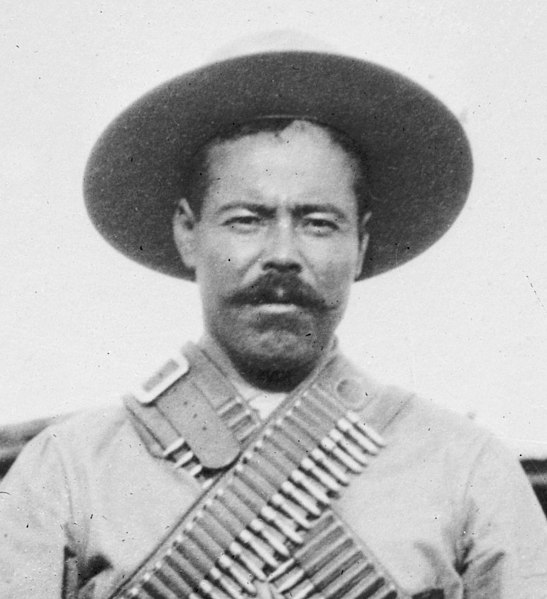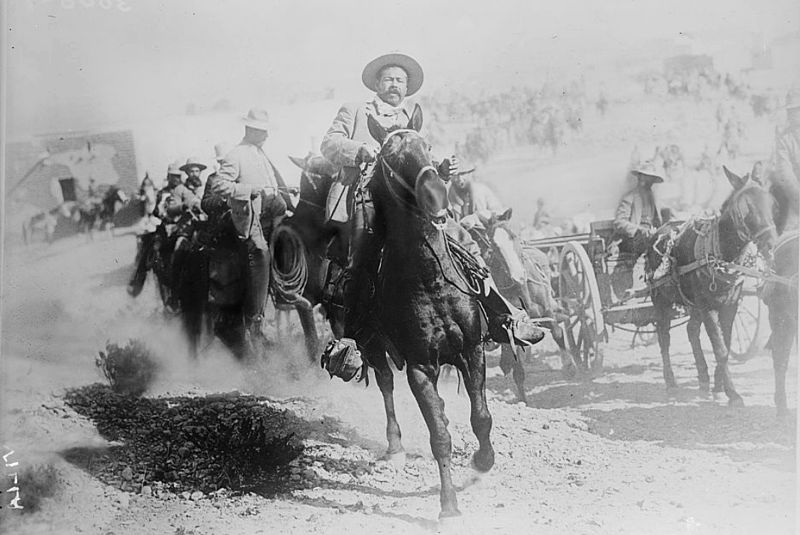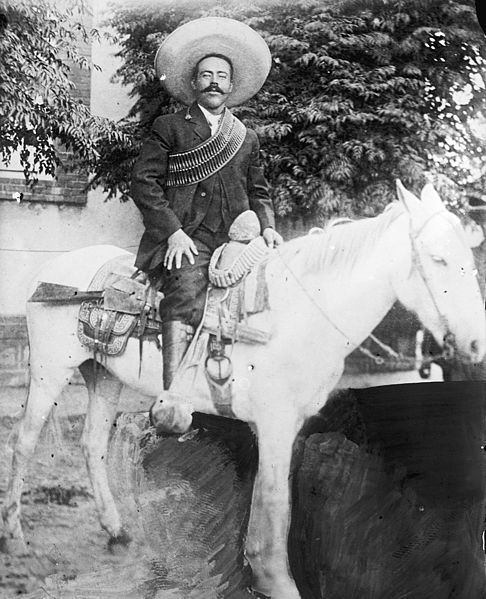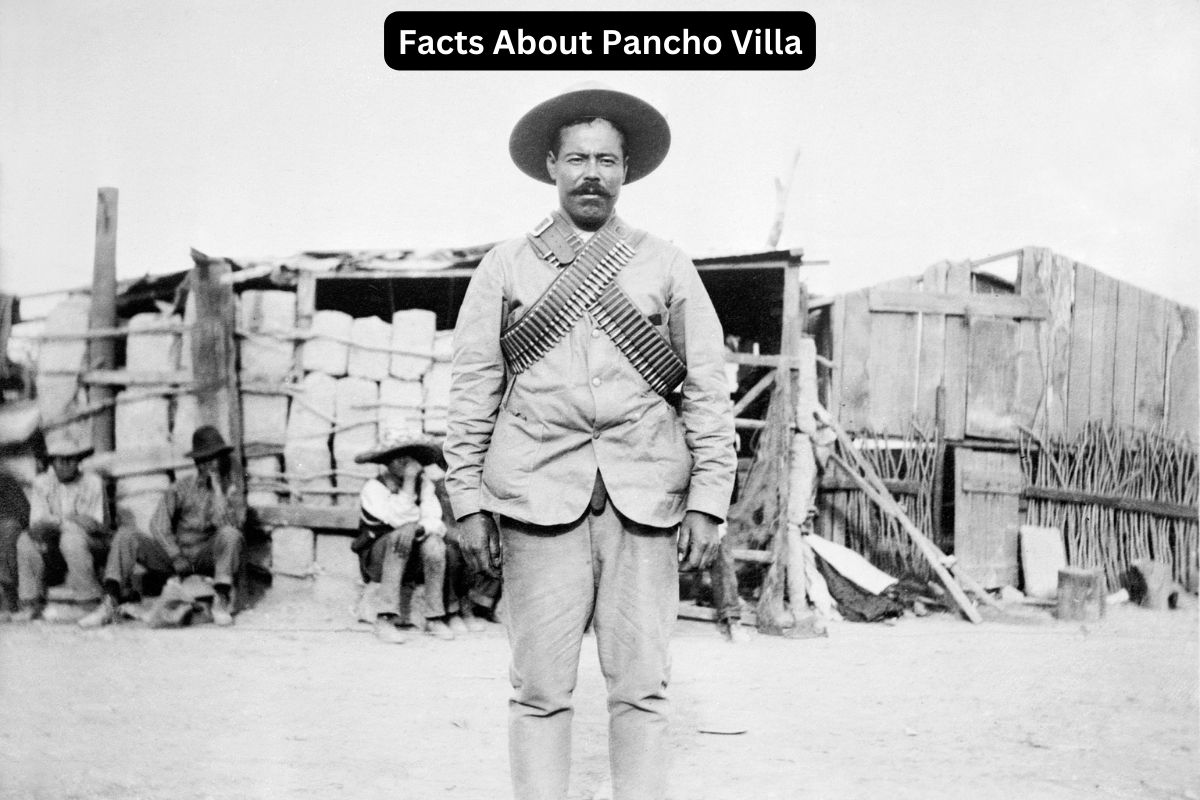In the annals of Mexican history, few figures loom as large or evoke as much fascination as Pancho Villa. Born José Doroteo Arango Arámbula in 1878, Villa’s life journey from a humble peasant to a celebrated revolutionary leader is a saga of grit, defiance, and tumult.
Amidst the backdrop of the Mexican Revolution, Villa emerged as a charismatic and enigmatic figure, leading the famed “Division del Norte” against government forces with guerrilla tactics that captured the imagination of generations.
However, Villa’s legacy is as complex as it is enduring, marked by controversy, heroism, and tragedy. This article delves into the life, exploits, and lasting impact of Pancho Villa, exploring the man behind the legend and the indelible mark he left on Mexican history and beyond.
Pancho Villa Facts
1. Born José Doroteo Arango Arámbula on June 5, 1878
Pancho Villa was born under the name José Doroteo Arango Arámbula in the town of San Juan del Río, Durango, Mexico. He grew up in a peasant family and experienced poverty and hardship from a young age.

2. Known for his involvement in the Mexican Revolution
Villa became a prominent figure during the Mexican Revolution, a period of widespread social and political upheaval in Mexico from 1910 to 1920. He initially joined the revolutionary forces led by Francisco Madero, who aimed to overthrow the dictatorship of President Porfirio Díaz.
3. Led the “Division del Norte” against government forces
Villa’s military leadership played a significant role in the revolution. He commanded the “Division del Norte,” a formidable army composed primarily of peasant and working-class soldiers from the northern regions of Mexico.
Also Read: Mexican Government Facts
Under Villa’s leadership, this division achieved notable victories against government forces, gaining control over significant territories in northern Mexico.
Villa’s military campaigns, marked by his strategic brilliance and fierce determination, made him one of the most prominent revolutionary leaders of his time.
4. Employed guerrilla warfare tactics effectively
Pancho Villa was renowned for his adept utilization of guerrilla warfare tactics during the Mexican Revolution. His forces, often outnumbered and outgunned by government troops, relied on hit-and-run attacks, ambushes, and mobility to gain the upper hand.
Also Read: Emiliano Zapata Timeline
Villa’s understanding of the rugged terrain of northern Mexico and his ability to blend with local populations made his guerrilla tactics highly effective against conventional military forces.

5. Infamously raided Columbus, New Mexico, in 1916
One of the most notorious events associated with Pancho Villa was the raid on the border town of Columbus, New Mexico, on March 9, 1916. Villa’s forces, numbering around 500 men, attacked the town, seeking to acquire weapons and supplies.
The raid resulted in the deaths of several American citizens and prompted a swift response from the United States. In retaliation, U.S. President Woodrow Wilson ordered the Punitive Expedition, a military campaign led by General John J. Pershing, to pursue Villa into Mexico.
6. Cultivated a populist image, championing the poor
Pancho Villa skillfully cultivated an image as a champion of the poor and marginalized during the Mexican Revolution. He portrayed himself as a defender of the common people against the oppressive ruling class and gained widespread support among peasants and workers.
Villa’s populist appeal was bolstered by his actions, such as the redistribution of land seized from wealthy landowners to landless peasants.
Despite his often brutal tactics in battle, Villa’s reputation as a revolutionary hero endures in Mexican folklore and popular culture, symbolizing resistance against injustice and inequality.

7. Briefly served as governor of Chihuahua.
Following his military successes during the Mexican Revolution, Pancho Villa briefly held political power. In 1913, Villa was appointed provisional governor of the state of Chihuahua, a position he held for a short period.
However, Villa’s governance was marked by instability and conflict, reflecting the chaotic nature of the revolutionary era. Despite his brief stint as governor, Villa’s authority was challenged by rival factions within the revolutionary movement and by ongoing conflicts with federal forces.
8. Assassinated on July 20, 1923, in Parral, Chihuahua
Pancho Villa’s life came to a violent end when he was assassinated on July 20, 1923, in Parral, Chihuahua, Mexico. While traveling in his car, Villa was ambushed and shot multiple times by unknown assailants.
The circumstances surrounding his assassination remain shrouded in mystery, with theories suggesting various motives, including political vendettas or retaliation by former enemies.
Villa’s death marked the end of an era in Mexican history and left a lasting legacy as one of the most iconic figures of the Mexican Revolution.
9. Controversial figure, celebrated by some, criticized by others
Pancho Villa’s legacy is a subject of debate and controversy in Mexico and beyond. While many regard him as a hero and revolutionary icon who fought against oppression and injustice, others criticize his ruthless tactics and the violence associated with his military campaigns.
Villa’s complex character and the ambiguous nature of his actions during the revolution have led to divergent interpretations of his role in Mexican history. Nevertheless, his image continues to evoke strong emotions and remains a symbol of rebellion and defiance for many.
10. His life has inspired numerous cultural works globally
Villa’s life and exploits have captured the imagination of artists, writers, and filmmakers around the world.
His revolutionary activities, daring escapades, and larger-than-life persona have been depicted in numerous books, films, songs, and works of art, both in Mexico and internationally.
Pancho Villa’s legacy as a folk hero and symbol of resistance has transcended borders, making him a cultural icon whose influence extends far beyond the borders of his homeland.
